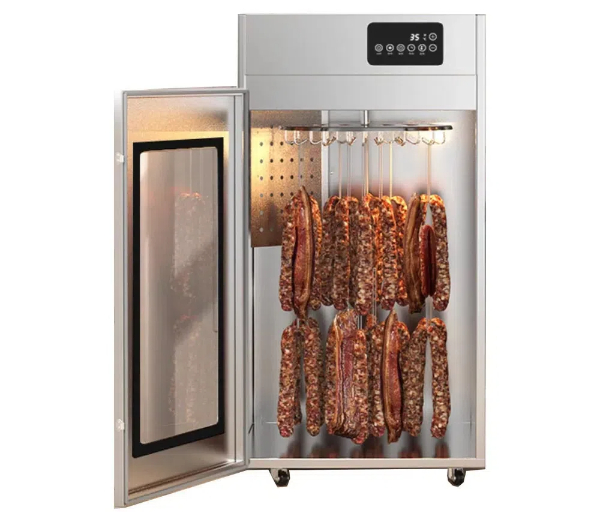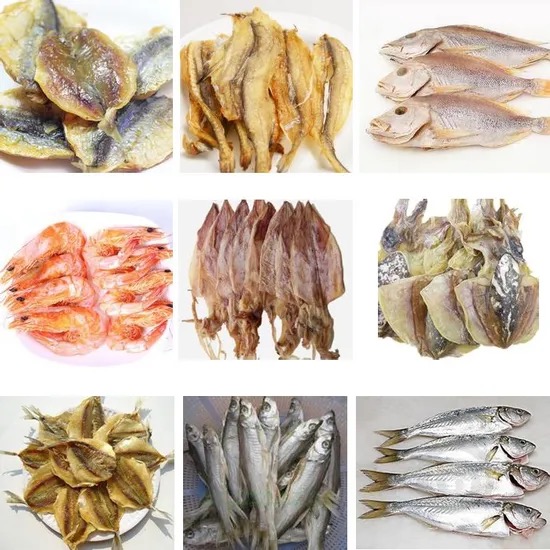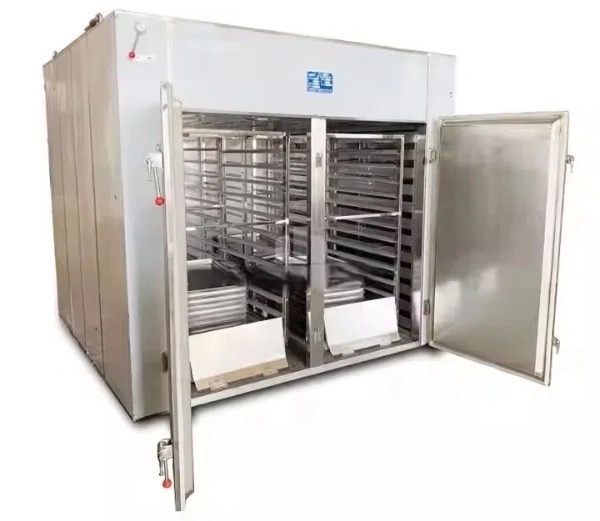
Content Menu
● What are Hang Type Drying Machines?
● Key Features and Benefits
● Common Misconceptions Debunked
>> 1. Hang Type Dryers are Exclusively for Noodles
>> 2. They Consume Excessive Amounts of Energy
>> 3. The Drying Process is Inherently Slow
>> 4. Maintenance is Complex and Costly
>> 5. They are Only Suitable for Large-Scale Operations
>> 6. Food Quality is Inevitably Compromised
>> 7. They are Excessively Difficult to Operate
>> 8. Hygiene Standards Cannot Be Maintained
>> 9. All Hang Type Dryers are Fundamentally the Same
>> 10. They are Unsuitable for Delicate Food Items
>> 11. Initial Investment Costs are Prohibitively High
>> 12. They are Difficult to Integrate into Existing Production Lines
● Conclusion
● FAQ
>> 1. What is the ideal temperature range for drying different types of food in a hang type dryer?
>> 2. How do I clean and maintain a hang type drying machine?
>> 3. Can hang type drying machines be customized to fit specific production needs?
>> 4. What are the energy-saving benefits of using a hang type drying machine compared to traditional methods?
>> 5. Are hang type drying machines suitable for small-scale businesses?
● Citations:
Hang type drying machines have emerged as a pivotal technology in the food processing industry, providing an efficient and effective means of dehydrating a diverse array of products. By suspending food items in a carefully regulated environment, these machines ensure uniform airflow, consistent drying, and superior preservation. However, despite their myriad advantages, several misconceptions persist, leading to confusion and hesitation among potential users. This comprehensive guide aims to debunk these myths, offering a clear and thorough understanding of hang type drying machines and their vast capabilities.

What are Hang Type Drying Machines?
Hang type drying machines are specialized drying systems engineered to dehydrate food products by suspending them vertically within a controlled atmosphere. This design is particularly advantageous for items that benefit from vertical drying, such as various types of noodles, sausages, herbs, seafood, and even certain fruits and vegetables. The unique construction ensures that air circulates evenly around each product, resulting in consistent drying and optimal preservation of quality, flavor, and nutritional content.
Key Features and Benefits
Before delving into the common misconceptions, it is essential to understand the core features and benefits that make hang type drying machines a valuable asset in the food processing industry. These advantages underscore their efficiency, versatility, and cost-effectiveness.
- Adjustable Temperature Range: These machines offer a wide temperature control range, typically from 18°C to 80°C (64°F to 176°F), enabling customized drying processes tailored to the specific requirements of different food products. This precision is crucial for maintaining the integrity of delicate items such as herbs and spices, as well as ensuring thorough drying of thicker products like meats and sausages.
- Exceptional Energy Efficiency: Hang type dryers are designed with energy efficiency in mind, often achieving up to 75% savings in electricity consumption compared to traditional drying methods. This is largely due to the incorporation of heat pump technology, which recycles heat and minimizes energy waste, resulting in significant reductions in operating costs.
- Versatile Multi-Functionality: These machines can perform a variety of functions, including hot drying, cold drying, and dehumidification, making them highly versatile for processing a wide range of food products. This adaptability allows businesses to use a single machine for multiple drying needs, further enhancing their return on investment.
- Durable and Hygienic Construction: Constructed from food-grade stainless steel, hang type drying machines are built to withstand the rigors of continuous operation while maintaining the highest standards of hygiene. Stainless steel is easy to clean, resistant to corrosion, and does not harbor bacteria, ensuring that food products remain safe and uncontaminated.
- Intuitive User-Friendly Controls: Equipped with digital interfaces, these machines provide operators with easy-to-use controls for setting and monitoring drying parameters. This allows for precise adjustments to temperature, humidity, and airflow, ensuring optimal drying results for different types of food products.
- Optimized Space Efficiency: The compact design of hang type dryers maximizes space utilization in production facilities, making them ideal for businesses with limited floor space. Their vertical configuration allows for a higher volume of product to be dried in a smaller footprint compared to traditional horizontal drying systems.
- Significant Labor Savings: Automated controls reduce the need for manual monitoring, resulting in significant labor savings and minimizing the potential for human error. This allows employees to focus on other critical tasks, improving overall operational efficiency.
- Scalable Capacity Options: Available in various capacities, ranging from small-scale units suitable for 100 kg batches to large-scale industrial models capable of handling up to 10 tons, these dryers can be scaled to meet the specific needs of businesses of all sizes. This scalability ensures that businesses can invest in a machine that aligns with their current production volume and future growth plans.
- Extended Product Shelf Life: By effectively removing moisture, hang type drying machines significantly extend the shelf life of food products, reducing waste and improving profitability. This is particularly important for businesses that produce perishable items, as it allows them to reach a wider market and minimize losses due to spoilage.
- Consistent and Uniform Drying: The design of hang type dryers ensures consistent and uniform airflow throughout the machine, guaranteeing even exposure to heat and air for all items. This results in consistent drying across batches, eliminating the risk of under-dried or over-dried products.

Common Misconceptions Debunked
1. Hang Type Dryers are Exclusively for Noodles
One of the most pervasive misconceptions is that hang type dryers are designed solely for drying noodles. While these machines excel at drying stick noodles and spaghetti, their versatility extends to a wide spectrum of food products.
- Reality: Hang type dryers are suitable for meats (such as sausages and jerky), seafood (including fish and shrimp), a variety of herbs and spices, fruits, and vegetables. Their adjustable temperature range and multi-functional capabilities make them adaptable to diverse drying requirements, accommodating everything from delicate herbs to hearty meats.
2. They Consume Excessive Amounts of Energy
Many individuals believe that drying machines, in general, are energy-intensive, leading to substantial electricity bills. This misconception often dissuades businesses from investing in hang type dryers.
- Reality: Hang type dryers are specifically engineered for energy efficiency, utilizing advanced heat pump technology to minimize energy consumption. In fact, they can achieve up to 75% savings in electricity compared to traditional drying methods, resulting in significant reductions in operational expenses and a smaller environmental footprint.
3. The Drying Process is Inherently Slow
Some individuals assume that because hang type dryers are energy-efficient, the drying process must be inherently slow. This concern is particularly relevant for businesses that require rapid turnaround times.
- Reality: While the drying process is carefully controlled to ensure the preservation of food quality, it is not necessarily slow. The adjustable temperature and airflow settings allow operators to optimize the drying speed based on the specific product type and desired moisture level. Furthermore, the uniform airflow ensures that all items dry evenly, minimizing the need for prolonged drying times and maximizing throughput.
4. Maintenance is Complex and Costly
Another common misconception is that hang type dryers necessitate intricate and expensive maintenance procedures, making them a burden to own and operate.
- Reality: Hang type dryers are designed for durability and ease of maintenance. Regular cleaning of interior surfaces is essential to maintain hygiene and prevent contamination. Periodic checks on heating elements and air circulation systems ensure optimal performance. Many suppliers offer comprehensive maintenance support and readily available spare parts, minimizing downtime and reducing maintenance costs. Simple preventative maintenance can significantly extend the lifespan of the machine and ensure consistent performance.
5. They are Only Suitable for Large-Scale Operations
Small businesses often assume that hang type dryers are suitable only for large-scale industrial operations due to their perceived size and capacity requirements.
- Reality: Hang type dryers are available in a range of capacities, from small-scale units suitable for 100 kg batches to large-scale industrial models capable of handling up to 10 tons. This scalability enables both small businesses and large industrial operations to benefit from this technology. Businesses can select a machine that aligns with their specific production volume without over-investing in excess capacity.
6. Food Quality is Inevitably Compromised
A common concern is that the drying process in hang type dryers may compromise the nutritional value, flavor, and color of the food products.
- Reality: Hang type dryers offer precisely controlled drying conditions that help preserve the nutritional value, flavor, and color of food products. The ability to adjust temperature and humidity levels ensures that food items are dried optimally without overheating or losing essential nutrients. This results in high-quality dried products that retain their natural goodness.
7. They are Excessively Difficult to Operate
Some individuals believe that hang type dryers are complex machines that require specialized training to operate effectively.
- Reality: Many models are equipped with intuitive digital interfaces that allow operators to easily set and monitor drying parameters. The automated controls reduce the need for manual monitoring during the drying process, making them user-friendly and efficient. Basic training is typically sufficient to enable operators to use these machines effectively, minimizing the learning curve.
8. Hygiene Standards Cannot Be Maintained
There is a misconception that hanging food items in a dryer can lead to contamination and hygiene issues.
- Reality: Hang type dryers are constructed from food-grade stainless steel, a material that is exceptionally easy to clean and sanitize. Regular cleaning of the interior surfaces prevents contamination and ensures that stringent hygiene standards are consistently met. The enclosed design also protects the food items from external contaminants during the drying process, further safeguarding product quality.
9. All Hang Type Dryers are Fundamentally the Same
Some people incorrectly assume that all hang type dryers are identical, failing to consider the significant variations in features, build quality, and supplier reputation.
- Reality: There are substantial differences between hang type dryers from different manufacturers. Factors such as energy efficiency ratings, customization options, build quality, and the level of supplier support can vary widely. It is crucial to choose a supplier with a proven track record of providing reliable and durable equipment and offering excellent customer service.
10. They are Unsuitable for Delicate Food Items
There is a perception that hang type dryers are too harsh for delicate items like herbs and spices, potentially damaging their aroma and flavor.
- Reality: Hang type dryers are ideally suited for drying herbs and spices because they maintain controlled conditions that preserve their essential oils and flavors. The adjustable temperature and airflow settings allow for gentle drying, ensuring that delicate items retain their quality and aromatic properties.
11. Initial Investment Costs are Prohibitively High
Many businesses are hesitant to invest in hang type drying machines due to the perceived high initial investment costs.
- Reality: While the initial investment may seem significant, the long-term benefits of hang type drying machines far outweigh the upfront costs. The energy savings, reduced labor costs, improved product quality, and extended shelf life all contribute to a rapid return on investment. Furthermore, financing options and government incentives may be available to help offset the initial costs.
12. They are Difficult to Integrate into Existing Production Lines
Some businesses worry about the complexity of integrating hang type drying machines into their existing production lines.
- Reality: Hang type drying machines are designed to be easily integrated into existing production lines. They can be customized to fit specific space requirements and can be seamlessly integrated with other equipment such as washers, slicers, and packaging machines. This flexibility makes them a versatile addition to any food processing facility.
Conclusion
Hang type drying machines offer a multitude of advantages for food processing businesses, including energy efficiency, versatility, improved product quality, and extended shelf life. By addressing and dispelling common misconceptions, this guide aims to provide a more comprehensive understanding of these machines, empowering businesses to make informed decisions about their adoption. Whether you are drying noodles, meats, seafood, or herbs, a hang type dryer can be a transformative investment for your business, enhancing efficiency, reducing costs, and improving product quality.

FAQ
1. What is the ideal temperature range for drying different types of food in a hang type dryer?
The ideal temperature range typically falls between 18°C to 80°C (64°F to 176°F). However, the specific temperature depends on the type of food. For example, herbs and spices require lower temperatures (18°C to 40°C) to preserve their essential oils, while meats and seafood may require higher temperatures (50°C to 70°C) to ensure proper drying and preservation.
2. How do I clean and maintain a hang type drying machine?
Regular cleaning is essential to maintain hygiene and prevent contamination. Follow these steps:
1. Turn off and unplug the machine.
2. Remove any food debris from the interior surfaces.
3. Wipe down the interior with a food-grade cleaner and sanitizer.
4. Check and clean the air filters regularly.
5. Inspect heating elements and air circulation systems periodically.
3. Can hang type drying machines be customized to fit specific production needs?
Yes, many suppliers offer customization options to tailor the machine to specific production needs. This includes adjusting the size and capacity, adding specialized racks or hooks for different food items, and integrating advanced control systems.
4. What are the energy-saving benefits of using a hang type drying machine compared to traditional methods?
Hang type drying machines can save up to 75% in electricity compared to traditional drying methods. This is primarily due to the use of heat pump technology, which recycles heat and reduces energy waste.
5. Are hang type drying machines suitable for small-scale businesses?
Yes, hang type drying machines are available in various capacities, ranging from small-scale (100 kg) to large-scale (10 tons). Small businesses can choose a machine that meets their specific production volume without over-investing.
Citations:
[1] https://www.dryeratech.com/hang-type-drying-machine.html
[2] https://www.hometrust.sg/articles/dryer-vs-steigen-vs-laundry-rack-which-to-choose/
[3] https://www.dryeratech.com/why-choose-a-hang-type-drying-machine-for-your-business.html
[4] https://patents.google.com/patent/CN110207480A/zh
[5] https://www.ike.cn/food-dehydrator.html
[6] https://www.reddit.com/r/CleaningTips/comments/15l5khs/whats_the_point_of_having_a_dryer_when_almost/
[7] https://www.bchydro.com/powersmart/residential/tips-technologies/hang-dry-laundry.html
[8] https://patents.google.com/patent/WO2017197612A1/zh
[9] https://industrialdryers.com/food-dryers/
[10] https://www.hoz.sg/blog/air-dry-vs-dryer-pros-cons-and-which-way-is-the-best
[11] https://www.mediclinics.com/en/blog/81_debunking-the-4-big-myths-about-electric-hand-dryers.html











